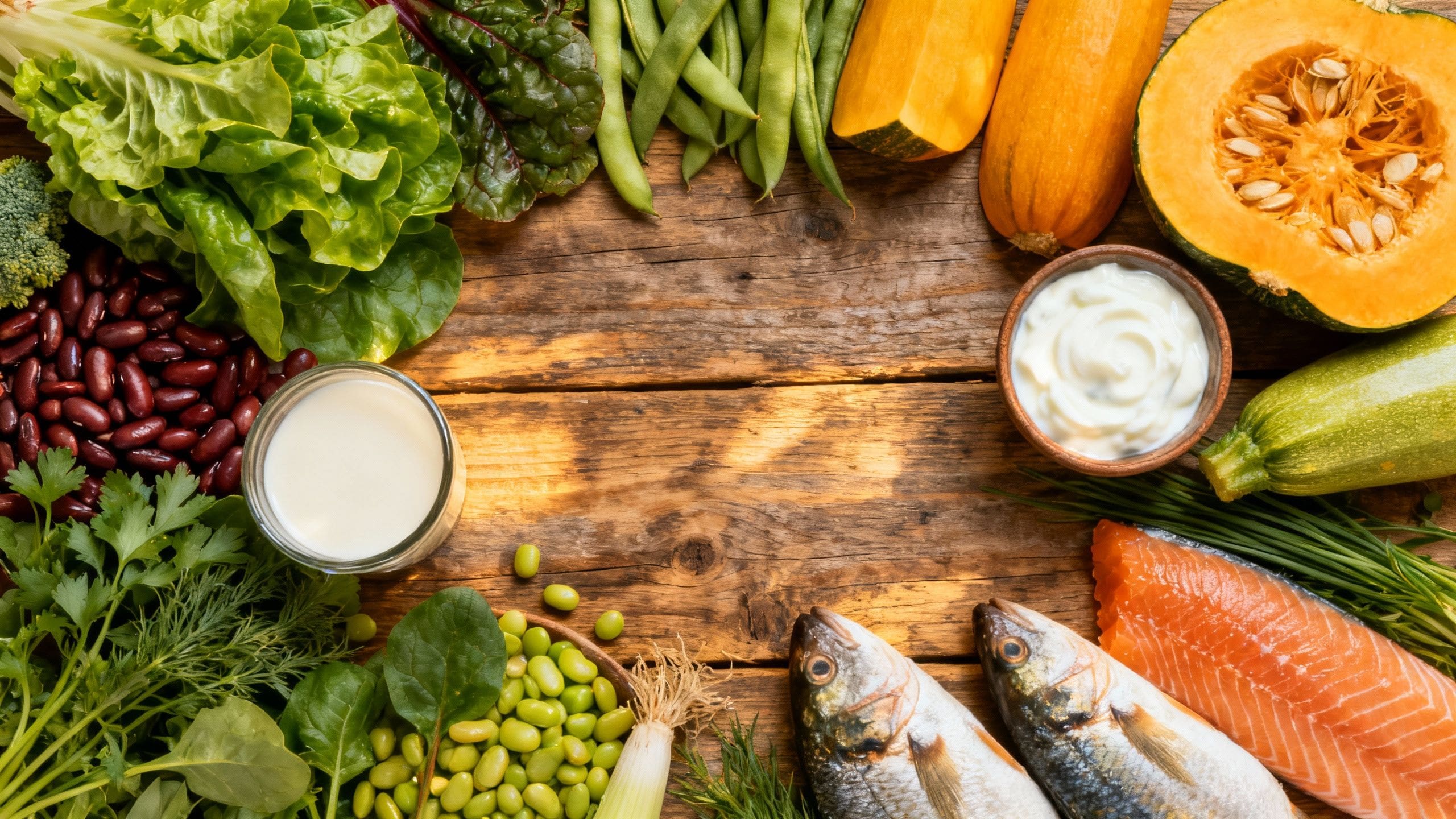Introduction
When discussing heart health and achieving an optimal heart, potassium foods are often recognized for their role in maintaining healthy blood pressure levels. While bananas are the go-to potassium source in popular culture, there are many other foods—such as leafy greens, beans, squash, yogurt, and fish—that can support blood pressure control and overall cardiovascular health. Understanding how to incorporate these foods and balance them with sodium intake is essential for anyone aiming for improved heart health and optimal heart function.
This article explores the best potassium-rich foods for blood pressure control, their clinical benefits, and practical strategies for maximizing your heart health through diet.
What is Potassium‑Rich Nutrition?
Potassium is a vital mineral and electrolyte that helps regulate fluid balance, nerve signals, and muscle contractions—including the heart. Its discovery as a dietary factor emerged in the mid-20th century, and it plays a crucial part in cardiovascular health by counteracting sodium’s blood pressure-raising effects. Increasing potassium intake via foods like leafy greens, beans, and fish has been linked to lower blood pressure and a reduced risk of heart disease (Mente et al., 2018, Whelton et al., 1997).
Benefits and Outcomes in Heart Disease
Consuming potassium-rich foods supports heart health in several ways:
- Blood Pressure Control: High potassium intake helps excrete sodium via urine, relaxing blood vessel walls and reducing blood pressure (Aburto et al., 2013).
- Cholesterol & Atherosclerosis: Regular consumption of leafy greens and beans, which are both rich in fiber and potassium, may reduce cholesterol and slow arterial plaque buildup, supporting optimal heart outcomes (Houston et al., 2011).
- Inflammation Reduction: Yogurt and fish, besides their potassium content, have anti-inflammatory properties that can help minimize cardiovascular risk (Mozaffarian et al., 2011).
- Electrolyte Balance: Potassium, paired thoughtfully with lower sodium consumption, creates an environment for optimal heart rhythm and muscular function (WHO, 2012).
Research Insights
Significant studies demonstrate the impact of potassium-rich diets on cardiovascular outcomes:
- A meta-analysis by Aburto et al. (2013) found increased potassium intake significantly reduces systolic and diastolic blood pressure, especially in individuals with high sodium consumption or hypertension.
- Mente et al. (2018) noted that replacing sodium with potassium in the diet led to a marked decrease in cardiovascular disease risk.
- The DASH diet, emphasizing vegetables, legumes, low-fat dairy, and fish, consistently lowers blood pressure, due in part to higher potassium content (Sacks et al., 2001).
- Whelton et al. (1997) showed that even modest increases in potassium can make a significant difference in heart health, regardless of baseline blood pressure.
- The World Health Organization recommends higher potassium consumption for adults as a safe, non-pharmacologic approach to supporting blood pressure and preventing heart disease (WHO, 2012).
Practical Applications
To support heart health and achieve an optimal heart, incorporate potassium-rich foods in your diet:
- Leafy Greens: Spinach, Swiss chard, and kale are potassium superstars.
- Beans & Legumes: Lentils, white beans, and soybeans are excellent, especially if you’re plant-based (Dreher & Davenport, 2013).
- Winter Squash: Butternut or acorn squash packs a potassium punch.
- Yogurt: Choose low-fat or Greek yogurt varieties for added probiotics and protein.
- Fish: Salmon, mackerel, and tuna are good sources—plus they contain heart-healthy omega-3s.
The recommended daily potassium intake for adults is about 3,500–4,700 mg. Most people can safely achieve this through a balanced diet, but those with kidney disease should consult a healthcare provider due to potential complications (WHO, 2012).
Risks & Limitations
While potassium is essential for heart health, excessive intake can be dangerous—especially for people with impaired kidney function, since the kidneys regulate potassium balance. Hyperkalemia (high blood potassium) can lead to arrhythmias and muscle weakness (Weiner & Wingo, 1998). Research is ongoing regarding optimal dosing for specific populations and the interaction between potassium and commonly prescribed blood pressure medications (Mente et al., 2018).
Key Takeaways
- Potassium-rich foods like leafy greens, beans, squash, yogurt, and fish contribute to optimal heart health and blood pressure control.
- Such foods help counteract sodium’s negative effects, supporting electrolyte balance for an optimal heart.
- Research supports potassium’s protective role against high blood pressure and cardiovascular disease.
- Most adults benefit from aiming for 3,500–4,700 mg of potassium daily via whole foods.
- Individuals with kidney disease or on certain medications should consult a healthcare provider about potassium intake.
Frequently Asked Questions
1. Can potassium lower my blood pressure if I don’t eat bananas?
Yes! Foods like leafy greens, beans, squash, yogurt, and fish are rich in potassium and effective for blood pressure management (Aburto et al., 2013).
2. How does potassium benefit heart health?
Potassium helps balance sodium’s effects, promotes normal heart rhythm, and prevents artery stiffening, supporting an optimal heart (WHO, 2012).
3. Who should avoid high-potassium foods?
People with kidney disease or those on potassium-sparing medications should avoid excess potassium and consult a doctor (Weiner & Wingo, 1998).
4. Which whole foods are highest in potassium?
Spinach, white beans, sweet potatoes, yogurt, and fish are excellent sources (Dreher & Davenport, 2013).
Suggested Links
- American Heart Association: Potassium and Your Diet
- NIH: Potassium – Fact Sheet for Consumers
- PubMed – Potassium and Blood Pressure
Conclusion
A potassium-rich diet—featuring leafy greens, beans, squash, yogurt, and fish—offers powerful support for heart health without relying on bananas. These foods, combined with mindful sodium reduction, form the foundation for achieving an optimal heart and controlling blood pressure. Focus on dietary diversity, consult your healthcare team as needed, and make small, sustainable changes for lifelong cardiovascular health.



